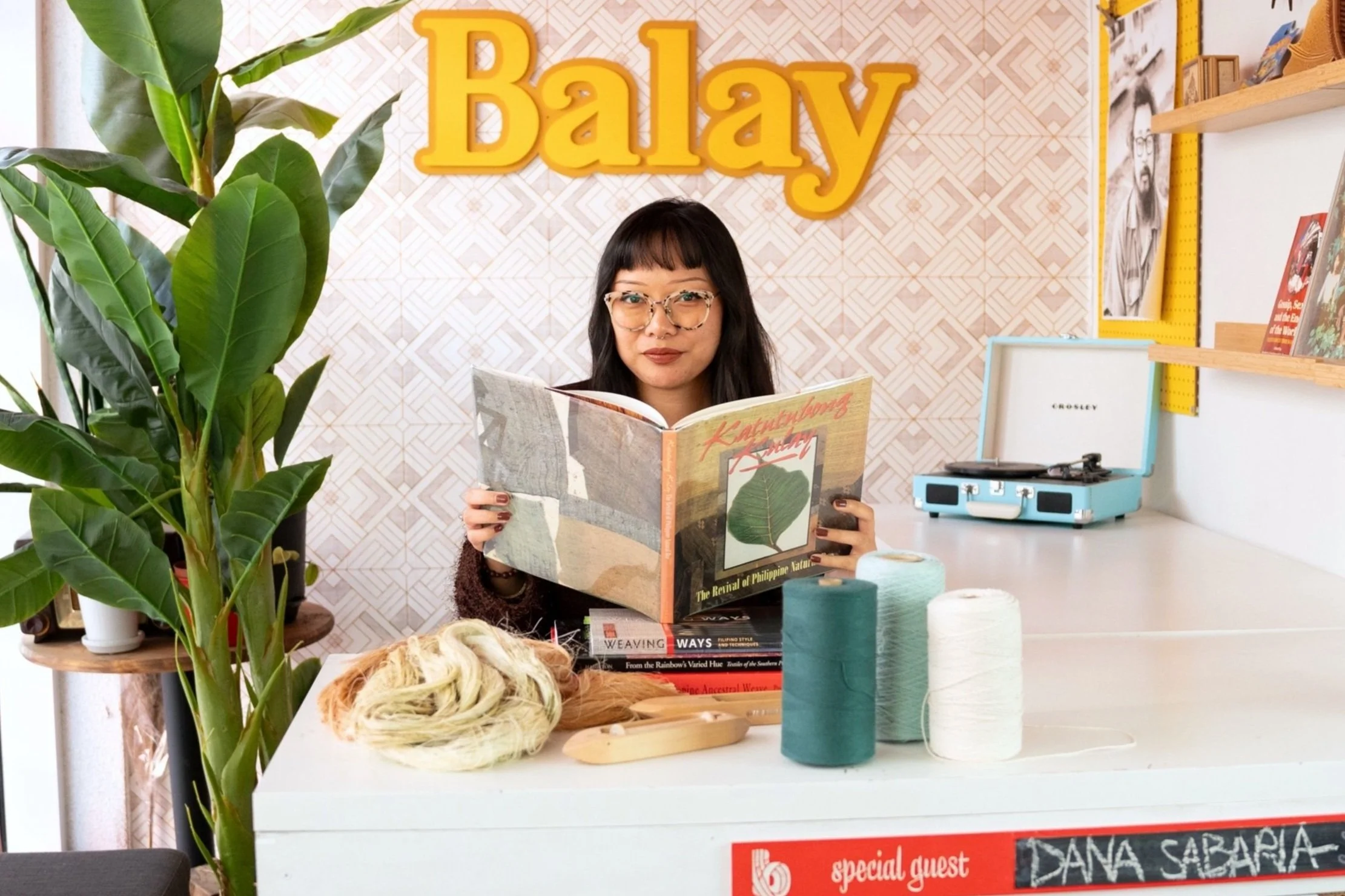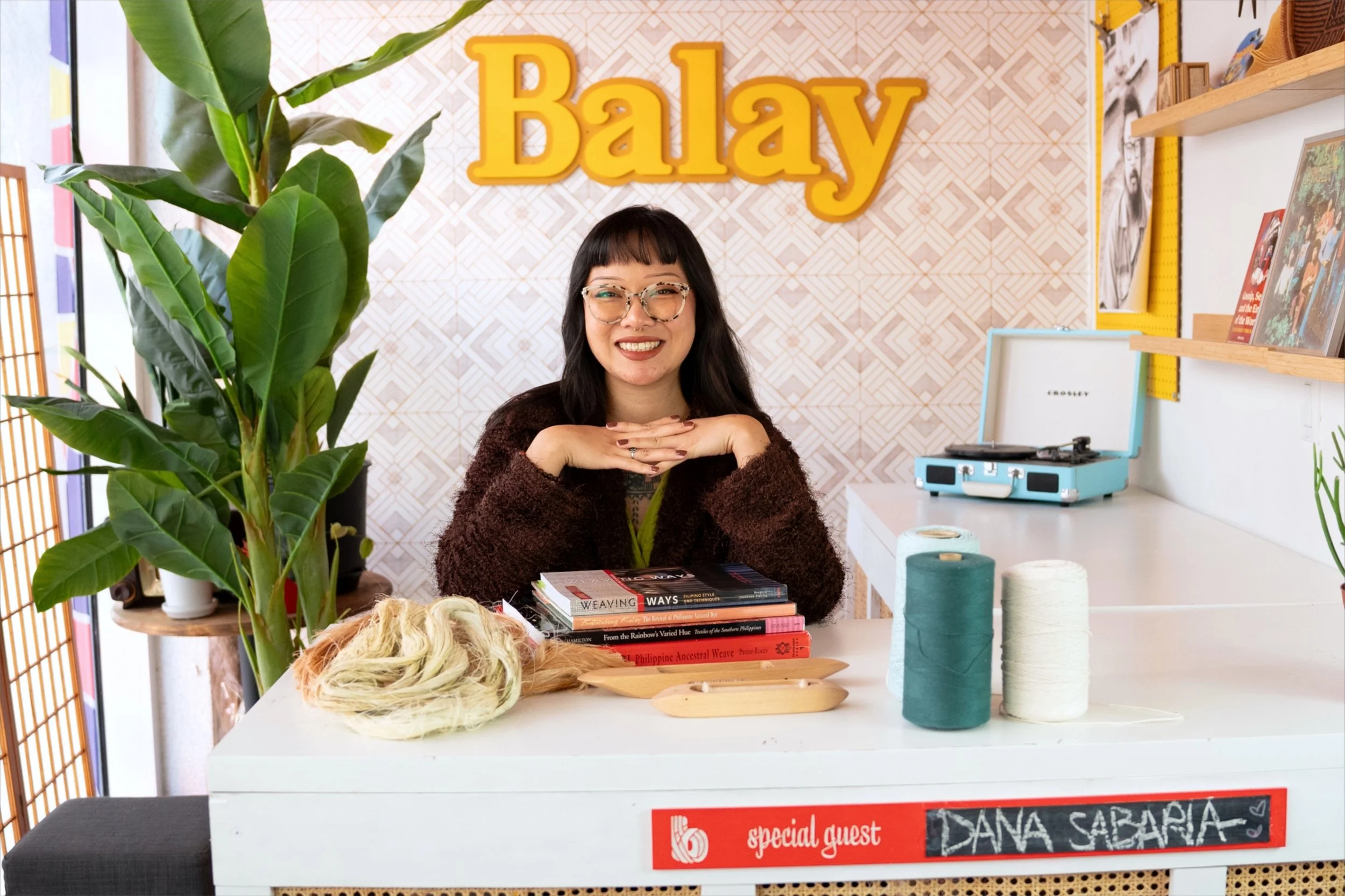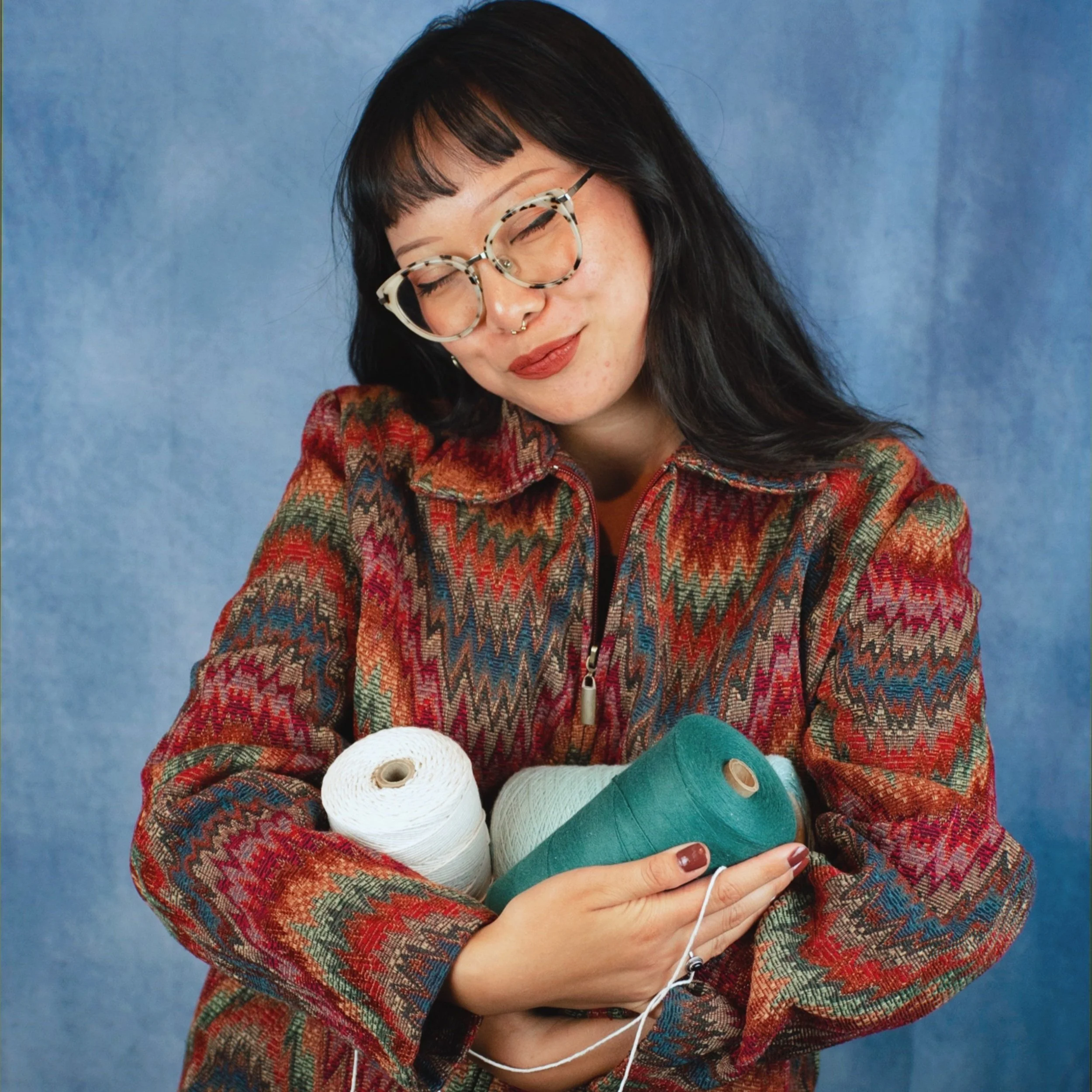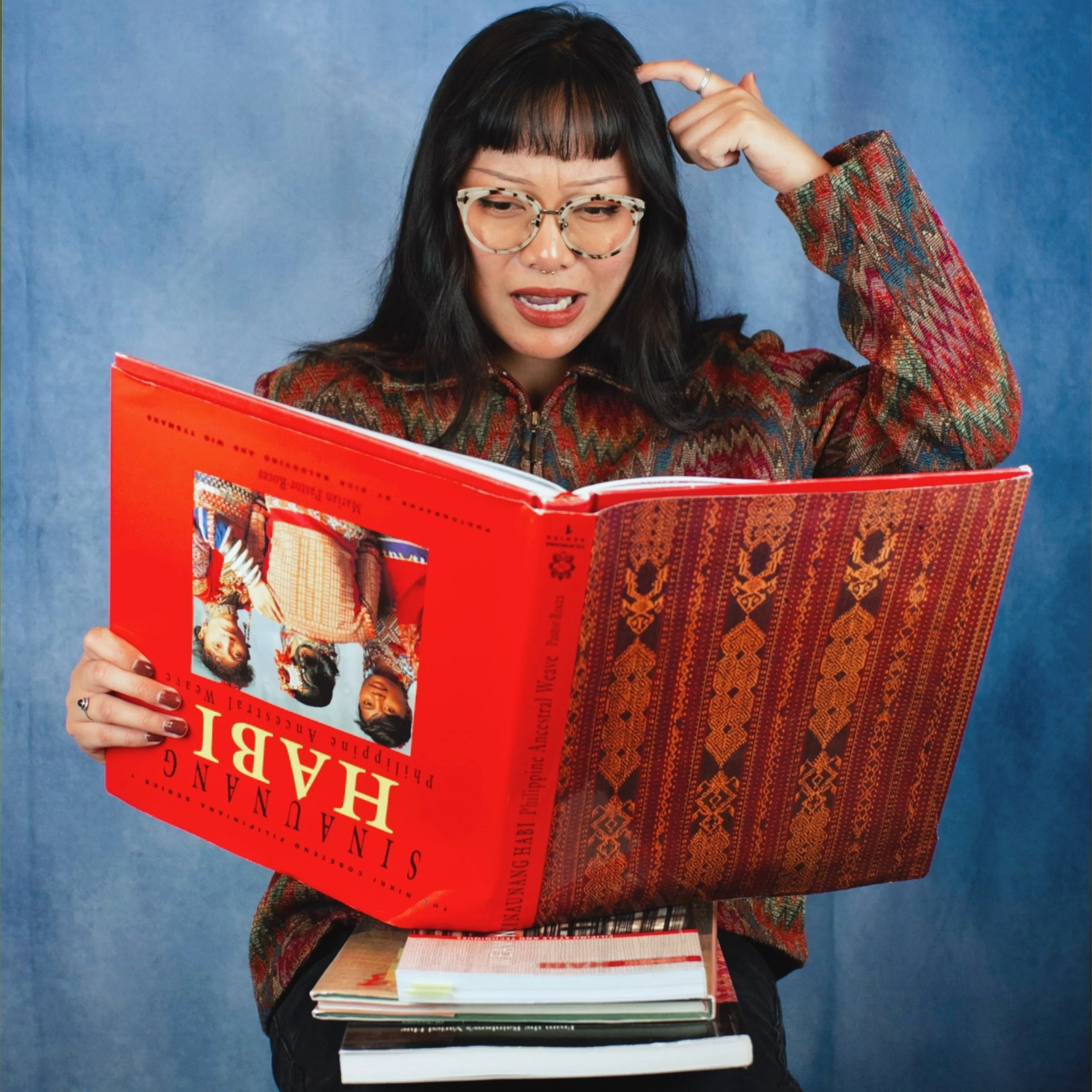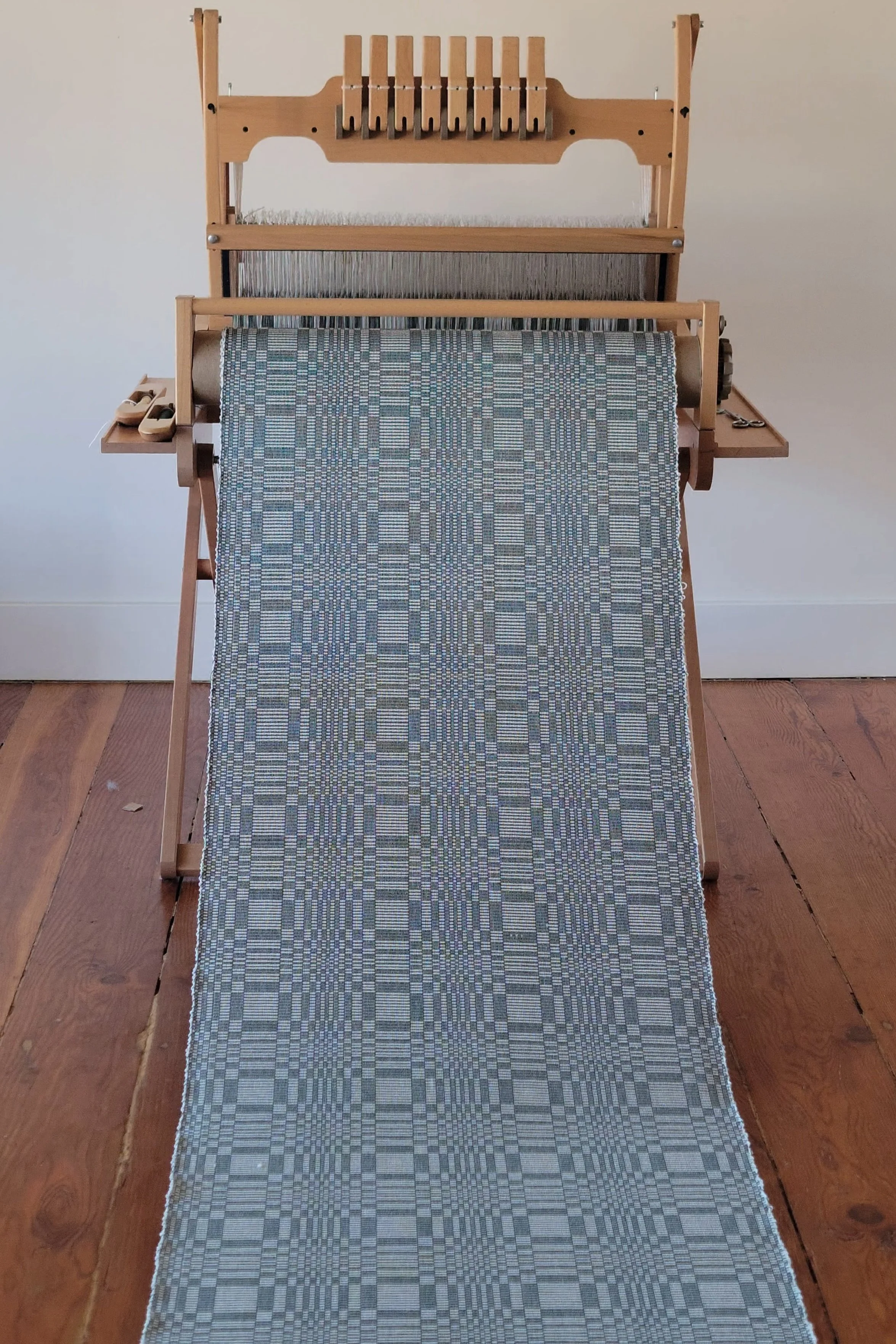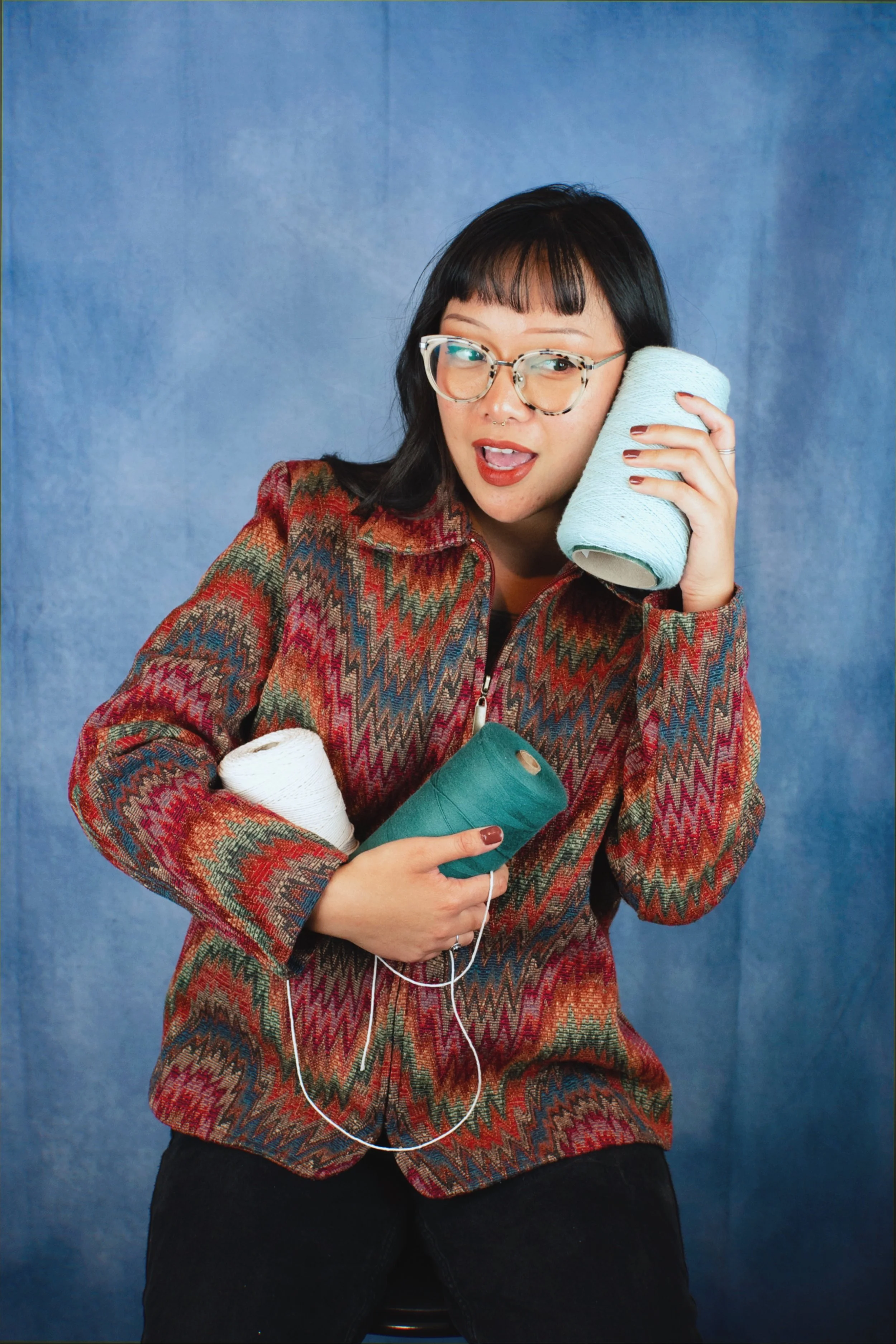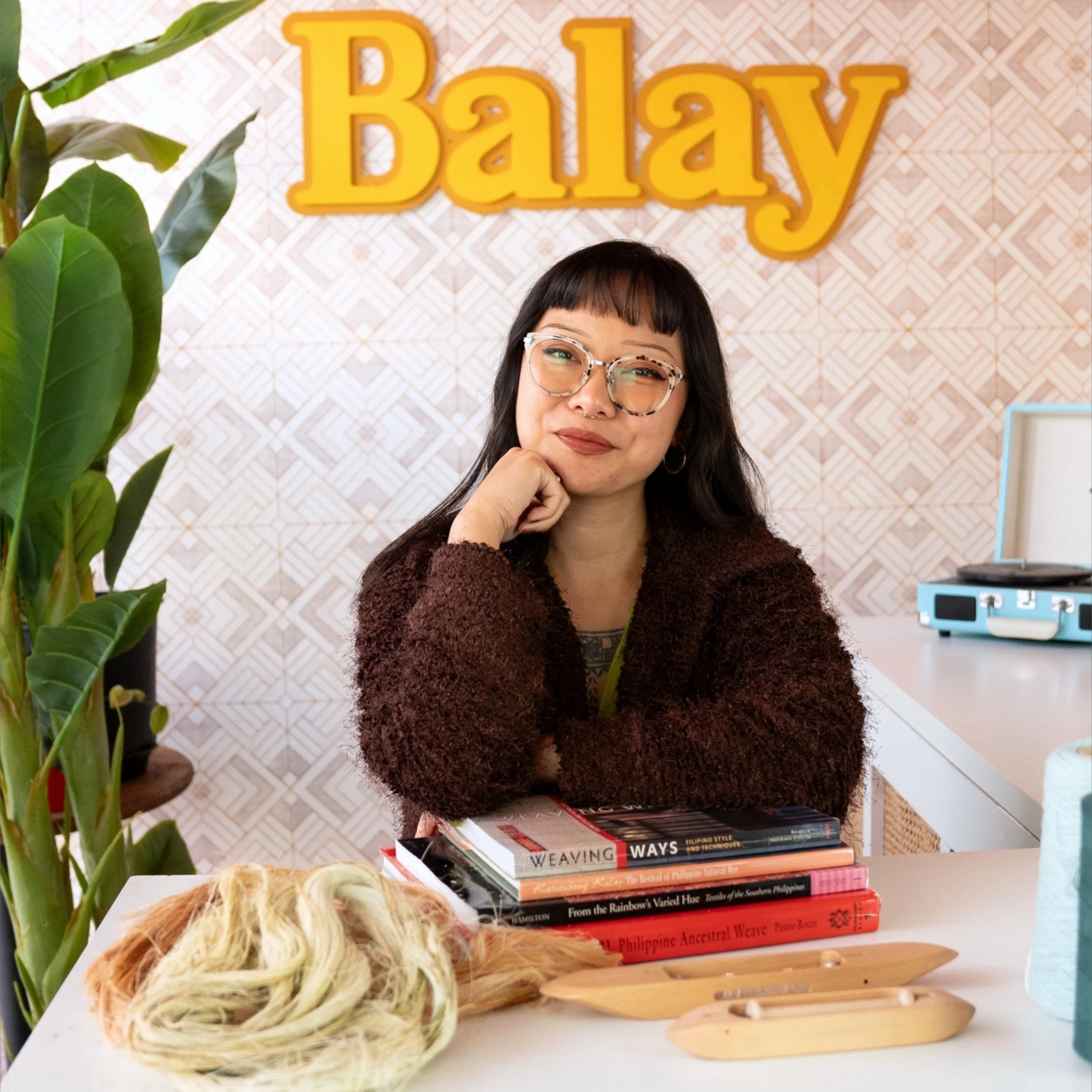Dana Sabaria on the Power of Weaving as Cultural Resilience: “Ripples Make Waves”
by Jaeya Bayani
Dana Sabaria, also known as Gabrielle Babaan, aims to infuse narratives and stories into textiles with guidance from traditional weaving patterns and techniques. With an educational background in creative writing and a career towards librarianship, their life has always drawn inspiration from untold stories. As a weaver, Dana seeks to capture the intricacies in the weaving process and challenge others to decipher the embedded stories, revealing deeper meanings and connections within the fibers.
Dana Sabaria, Photo courtesy of @alyssamcorpuz.
Please introduce yourself, your craft, and the project you are working on.
My name is Dana, and I’m a weaver. The project I'm working on is titled Ripples Make Waves. It's an exploration of cultural resilience through weaving. This project revolves around water and the kusikus pattern; it’s to embody movement, journeys within life, within the self, the preserving cultural practices and reconnecting to those that came before us. It's a small but hopefully potent collection of pieces that I am inviting the audience to reflect on and see themselves within the pieces.
Photo courtesy of @alyssamcorpuz.
What was your process for conceptualizing the intention and message behind “Ripples Make Waves?”
A lot of my conceptualizing for Ripples Make Waves comes from my experience in the diaspora. It's a part of my journey in following a trail of breadcrumbs and getting to where I am now. There was a lot of denial for me in starting weaving because I've done painting, sewing, marbling…and I wasn't sure if this was going to be another hobby for me. Then, then I found out that all of my great Lolas were weavers, and I realized that something bigger was happening here. It was kind of hard to ignore at that point.
Kusikus the pattern I'm working with for this project. It’s an Ilocano pattern, and it means whirlwind. [It] has a dizzying whirlpool effect when it's seen from different angles, and it looks like it's moving, which is really cool. Naturally, water has become a part of this project, and it's what surrounds our islands. It grows the materials for weaving, and it sustains our bodies; so I felt like it was important to incorporate it into the theme for this project. Aside from getting more people interested in the process of making fabric, I really wanted to showcase the power and potency of learning to read fabric—especially with textiles from the Philippines that containing insight into what our ancestors were seeing.
Dana Sabaria weaving the Kusikus pattern. Video courtesy of @gabriellebabaan.
Ripples makes waves is also for folks to reflect on their own work because, in my experience – when I was isolated, especially during COVID – you feel lost sometimes. It feels like you aren't making an impact or doing the right thing to make a ripple. I feel that, even if your ripples are small, it could inspire someone else. Then, that could inspire someone else. Before you know it, you're all making waves.
Dana’s weaving process, Video courtesy of @gabriellebabaan.
“Reconnecting and remembering one’s culture is a very necessary part of both individual and community wellness. We need to think about how arts that showcase our culture can also empower our community. ”
Share your hopes for what you and others will gain from the completion of “Ripples Make Waves,” specifically with regard to rooting oneself in and reconnecting with one’s culture.
My hope for this project and its completion is also that, the community will think more about what their ancestors have done for us to be here today, and the poetics behind all the cultural art forms. This goes for everyone that's not just Filipino. [It’s] for people to reconnect to their culture and explore the things that have been done before us. My hope is that folks will be able to think more about their ancestors, where they've come from, and what they've done for us to be here today.
I want this project to bridge past, present, and future. [It’s] not just about what's happening now—but what's happened in the past, how it's affecting us now; what's going to be done for the communities that come after us, and what are we leaving behind for them to continue to be able to explore these art forms.
Photo courtesy of @alyssamcorpuz.
Speaking more to the incredible lineage you come from – with your great lolas being weavers – did you receive any knowledge of what patterns they worked with in their craft?
I did not. It was one of those things where I feel separated from it for a couple generations. My parents and my grandparents didn't do it, but it was something that I had to ask about and find myself, too. It made me feel like there was a bigger connection to people I didn't even meet.
“It all connects back to the theme of my project, because the dyeing program was a ripple that passed through me, and now I’m passing it off to my audience.”
How has your background in Batik dyeing, as well as Binakol and Kusikus pattern weaving, inspired the theme for this project?
My experience with Batik dyeing started in a library program by one of my co-workers, who's also a Filipino librarian. We were dyeing with indigo and using rubber bands to tie pieces of fabric. This created the resist dye, so when you dip the fabric into the dye, the part where you tied leaves the mark. I got into dyeing my own fabric after that. Then, I was just like, “what if I made my own fabric?” I wondered what kind of fabrics were made in the Philippines, and then I went down the rabbit hole of weaving.
When reading about Philippine textiles, I came across kusikus. I was drawn to how it moves, and [it] as a means to reconnect to my Ilocano ancestors. It's a protective pattern used to ward away evil spirits. One of my pieces is to weave a sail-sized piece because I read that it was used for sails, to protect people that were on the sea.
Dana’s weaving process, Video courtesy of @gabriellebabaan.
Please describe the ways in which you use these various mediums to produce your desired effect with your current project.
My goal with weaving is to let the fabric be a storyteller, encourage the audience to reflect on the meaning of their own experiences, and how it might connect to what the fabric is saying. Weaving is a metaphor for who we are and where we come from. No matter who you are or where you come from, someone down your line is probably creating clothing for your family or weaving blankets for your family to keep them warm. It's an act of love and the whole thing is beautiful.
Photo courtesy of @alyssamcorpuz.
Up until this point, what has been the most meaningful experience at Balay Kreative? How has Balay Kreative helped you manifest your vision and intention for your project?
My most meaningful experience with Balay Kreative was the Weaving Freedom Workshop with Diwa Malaya. It was the first time that I got to weave with community and see everybody excited about doing a new practice. A lot of them were beginners. It was amazing to see the knowledge shared through that program, and see that it’s possible for me to start my own workshop. It was nice to meet some other weavers that are in the community. Balay Kreative has also helped me through the Master Class Series, [which has] been super helpful because I feel like a beginner in the artist world. It’s helping me navigate social media, create my own events, and everything like that. [They’re] experts in their fields, and it's helpful to learn from them.
Photo courtesy of @alyssamcorpuz.
“Even though there are books on textiles from the Philippines, there could always be more. [Somewhere down the line,] I’d love to do more research to bring to the community, as well as go to the Philippines and learn from them.”
How do you remain tapped into your creative power and passion for educating our community on our pre-colonial weaving techniques and textiles?
I didn't start weaving for a year or two because I wasn't sure if I was going down this path, but then I started reading books. I started learning about the process of weaving, and it just felt kind of natural. Remembering and channeling ancestral magic is a big part of why I'm here today, and why I'm on this journey. I'm constantly learning through the books that I read.
The Binakol pattern, Photo courtesy of @gabriellebabaan
Do you incorporate wellness (for yourself and others) into your weaving practice? If so, what are the areas you tend to focus in on?
Every thread is your motion, and you're throwing your movement back and forth. You're channeling energy of care, tenderness, and emotions [that is different from doing] a painting where you're expressing your anger. There are a lot of areas in the setup process where things can go wrong and affect your whole project. It's crucial to be present every step of the way, before you even begin with weaving.
I found movements associated with weaving to be very flowy and almost spiritual. While weaving can be relaxing and a meditative process, it can also be very hard on your body. This is why it's very important to take care of and strengthen your vessel. I'd consider taking care of your mind, body, and spirit essential in weaving and other art practices too.
Why is it important for the next generation to advocate for the continued integration of our history and elders’ legacy through arts, culture, and ethnic studies into our local community?
I feel that it's all tied together. If you think about our cultural practices and the effects of colonialism and imperialism, it's dwindling down our cultural practices. Weaving could very well fit into being endangered, so it's hard to discuss weaving without seeing its context. Weaving is only one step of a whole process, and it causes you to think about so much. For instance, “What are the textiles intended for? Are there gods or goddesses [that are meant to be] appeased with this fabric? What are the regional textiles and the symbols that are incorporated into them? What materials are available in the area?” You [also think] about who's making it and where the dye comes from.
Photo courtesy of @alyssamcorpuz.
Do you have any upcoming announcements, words of advice, or plugs you’d like to share?
If you care to follow along with my project, you can follow me @gabriellebabaan on Instagram, where I'll be posting all the details of my Project for Balay Kreative’s Kreative Growth Program.
“It’s important for the next generation to advocate for the legacy of our elders. We are here because of them. Producing art, continuing to be tapped into our culture, and educating ourselves through ethnic studies are crucial in keeping their voices alive.”

